The importance of starch in everyday life is very great. Most species are used for industrial purposes, which leads to the emergence of a number of specialized products. It is necessary for the manufacture of confectionery, meat products, used in medicine for the manufacture of medicines and in the pulp industry. What is the production of starch, as well as its types will be discussed in this article.
Where is starch used and its value
This substance is one of the most abundant in nature, a renewable and almost unlimited resource. Starch is made from cereals or root crops. It is mainly used as a food agent, but also due to chemical or biological processing, it is easily transformed into many useful products today.
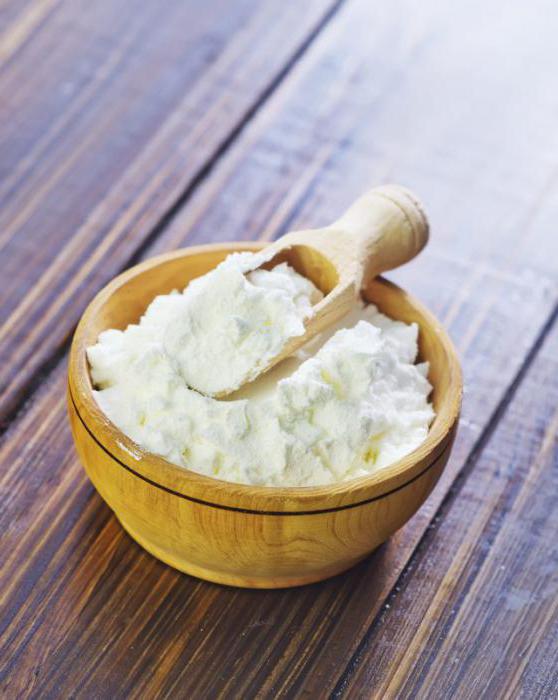
In addition to food, starch is used for the production of paper, textiles, adhesives, drinks, confectionery, the pharmaceutical industry and in the production of building materials. The substance has many remarkable characteristics, including the high viscosity of the paste, its transparency and maximum resistance to freezing and thawing processes, which are beneficial for many industries.
Starch production is a cost-effective business, as potatoes containing a high concentration of a substance, which serves as the basis for further production, are most often used as a relatively cheap source of raw materials. The processed dry concentrate can be compared in properties or even superior to similar substances obtained from corn, wheat, rice.
From plant to powder
Starch is a plant glucose supply. In Europe, it is found in corn, wheat and potatoes, from which it is extracted, as well as in many other plants: rice, barley, vegetables, cassava, sweet potatoes.
The formation of starch in plants occurs during photosynthesis. This physiological mechanism allows the production and storage of glucose (elemental sugar), necessary for their growth and reproduction. Initially, the plant assimilates carbon from the atmosphere and turns it into glucose. The main molecule is formed. Then it is used for the synthesis of starch polymers associated with pure glucose.
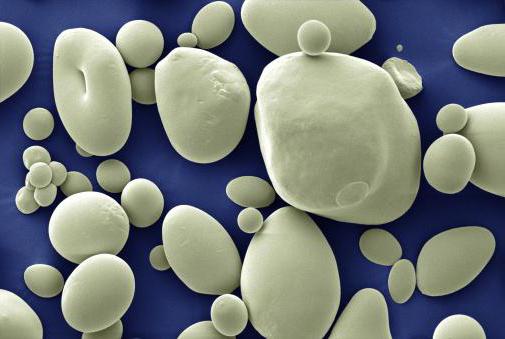
In plants, the substance looks like small granules, insoluble in cold water, ranging in size from 3 to 100 microns. Their shape varies according to origin. Under production conditions, starch and its derivatives are supplied to consumer industries in the form of flour-like powder or syrups.
Basic manufacturing operations
The starch industry produces more than six hundred kinds of products - from native starches to physically or chemically modified, in the form of dry powders to liquid and solid sweeteners. The versatility of such products is such that they are used as ingredients and functional additives in a wide range of food, non-food and feed additives.
The technology for the production of starch is the process of separating plant components into starch, protein, cellulose shell, soluble fractions, and in the case of corn, the germ is also used, from which oil will be extracted. This first phase uses a series of simple steps to physically separate the components: crushing, sieving, centrifuging, etc.However, production methods are specific to each plant, and industrial tools are usually designed for raw materials: corn, wheat or potatoes.
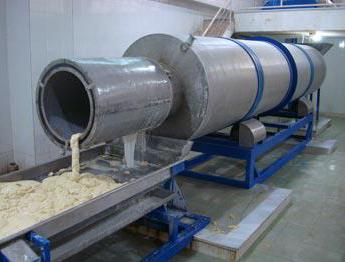
Starch production is moving on to the next stage. In a second step, the substance that has been recovered is further processed in its pure form. In the drying process, it is converted into the so-called native starch. Subsequent change in characteristics allows you to get a modified starch.
Industrial equipment
Fully automated production lines include all stages of production, transportation and packaging. Their main equipment for starch production will consist of components for drum washers, desonation, raspira, desander units, dewatering systems, vacuum filters and hydrocyclone units, dryers, packaging machines and control interfaces.
Starch and its types
Starches can be divided into two types: native and modified. Raw starches, which still retain their original structure and characteristics, are called native. Such a component is the main product that is sold in dry powder form under different grades for food, as well as pharmaceutical and industrial raw materials.
Native starches are obtained by isolating naturally occurring starch from either cereals or root crops such as cassava, corn and molasses. They can be used directly in the production of certain products, such as noodles. Native starch can be considered the main resource that can be processed into a number of starch products.
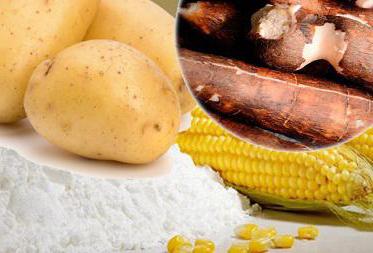
It should be noted that this type of substance has a limited time of use and is mainly used in the food industry. Native starch granules are easily hydrated when heated in water, quickly swell, gelatinize and have a high viscosity, which increases to a peak value with each subsequent heating.
Despite this peculiarity, food, metallurgical, mining, fermentation, construction, cosmetic, pharmaceutical, paper and paperboard, as well as textile industries use native starch in their traditional form.
Modified Starches
There are characteristics that are unattainable with native starch. Modified starch can be used for other industrial applications, it is obtained using a number of methods, chemical, physical and enzymatic modifications.

Thus, the substance is native starch, which has been changed in its physical and / or chemical properties. The production of modified starch may include changing the shape of the granule or the composition of the components — amylose and amylopectin molecules. Therefore, modifications are carried out on natural starch to give it the properties necessary for specific purposes: thickening, gelatinization, adhesiveness or film formation, to improve water retention. The product is also used to improve the taste and gloss, to remove or impart opacity.
When starch is modified chemically or physically, the properties of native starch change, which makes it useful in many industries, such as food, pharmaceutical, textile, petroleum and pulp and paper.
How is starch formed in potatoes?
About 75% of the potato crop is grown for industrial processing, which produces starch. It represents the nutritional reserves of many plants. During the growing season, green leaves collect energy from the sun. In potatoes, this energy is transported in the form of a sugar solution up to tubers. It is there that sugar turns into starch in the form of tiny granules. They occupy most of the interior of the camera.The conversion of sugar to starch occurs with the help of enzymes that are responsible for the re-conversion of the stored substance into sugar next spring.
In winter, potatoes consume a small amount of their starch in order to maintain vital functions until spring. Tubers need good air circulation to maintain vital activity. Low temperature helps to convert its own starch into sugar in order to lower the freezing temperature in cell juice. If this is not enough, the tubers die. Therefore, potatoes must be properly coated during storage.
Since tubers are the main source of potato starch, unfavorable storage conditions will lead to its loss, in the worst case, to dead and broken potatoes, which are not suitable for the process of starch separation.
Potato starch production
The procedures associated with the industrial manufacture of a product increase in complexity in accordance with the specific needs of each manufacturer. Potato starch production begins with removal mud, sand, gravel with tubers plants. Rinsing is a counterflow process, with fresh water being added through pressure nozzles at the final stage of purification. Then clean tubers are crushed in a special container.
After that, the starch extraction process begins, the purpose of which is to open the tuber cells and release the starch granules. Extraction takes place on rotating conical sieves and is a countercurrent process. High centrifugal force allows the use of high-quality stainless steel screen plates that withstand abrasion and chemicals. Screen plates have long perforations of only 125 microns across.
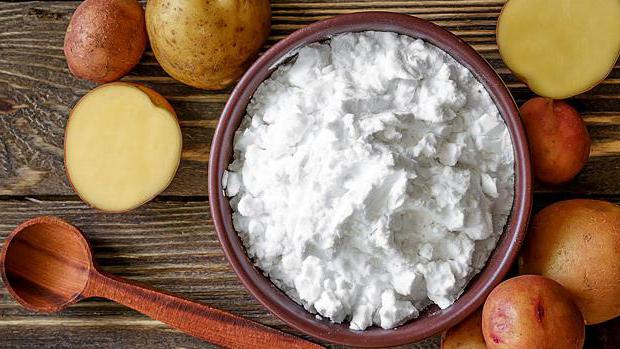
Starch production does not end there. Potato cell juice is rich in sugar and protein. When cells are opened, the juice is immediately exposed to air and reacts with oxygen, forming colored components that can adhere to starch. In order to avoid the oxidation process, sulfur dioxide or a sodium bisulfite solution must be added to the resulting product.
Wet starch from rotating vacuum filters is dried in a flash dryer with moderate hot air. Before delivery, the starch is sieved on a fine sieve to remove any dust formed in the screw conveyors.
Corn Starch Production
Corn starch is a popular food ingredient used in the food, textile, pharmaceutical and paper industries. It is obtained from the endosperm of the corn kernel. Corn starch production is popular in most countries of the world. Corn is grown in climatic zones with a temperate and warm climate. Recently, starch production has become popular in Russia.
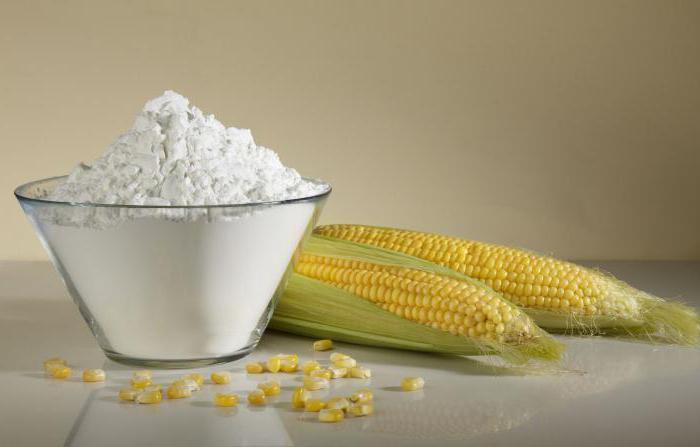
Basic operations include the following steps:
- Cleaning up. Raw materials are cleaned to remove foreign objects.
- Soak. Corn grains are immersed in large tanks with warm water containing acid and sulfur dioxide.
- Milling. Softening kernels by wet grinding in water.
- Settlement and decantation. The crushed product is allowed to settle by gravity, and after that the water is decanted, obtaining a thick suspension of corn mass.
- Screening. The suspension is sieved to remove the husk.
- Centrifugation Starch in suspension is separated from the protein.
- Starch dehydration and granulation.
- Drying using flash dryers.
- Milling. Dried corn starch is ground to the desired particle size.
After all production processes, starch is suitably packaged in a sealed and moisture-tight packaging material. The resulting product is modified and has improved qualities.It is used in the manufacture of sweeteners, calibration of paper and textiles, as a thickener and stabilizer of food.